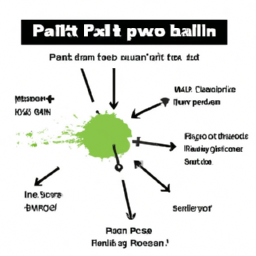GunPaintball Gun Speeds How Fast
How Fast Is A Paintball
How Fast is a Paintball?
Paintballing is a popular and global sport, and an increasing number of people wish to learn more about the performance of paintball markers and the speed of paintballs. Here, we discuss the facts in order to shed light on how fast a paintball is, and what factors contribute to its velocity.
Machs and Barrs
The speed of a paintball is measured in two terms: Machs and Barrs. Machs refer to the speed of sound in the atmosphere, whereas Barrs refer to the atmospheric pressure during the shot taken. When combined, Machs and Barrs give us a better gauge of the speed of a paintball.
Factors Affecting Paintball Speed
There are several factors that can contribute to the speed of the paintball:
- The weight of the paintball: The heavier the paintball, the slower it will fly. Most paintballs used in tournaments have a weight of .68/- .02, which is just enough to adhere to regulations while maximizing its speed.
- The amount of air used: The more air that is used within the paintball marker, the faster the paintball's speed will be.
- The type of paintball marker used: Generally speaking, mechanical paintball markers are slower than their electronic counterparts. Electronic markers inject air in smaller increments, resulting in greater control over the speed at which the paintball travels.
- The environmental conditions: Environmental factors, such as temperature and the humidity of the air, can also play a role in determining how fast a paintball travels.
Average Paintball Speed
The average paintball speed is approximately 280 feet per second, or about 190 miles per hour. This speed is based on a regulated tank pressure of 800 psi and a 12-gram CO2 cartridge.
Effecting Speed with Air Pressure
Generally, the two things to consider when looking to increase a paintball's speed are air pressure and the type of paintball marker used. Increasing the air pressure to the paintball marker will usually lead to a faster shoot. As previously mentioned, the drawback of higher air pressure is the potential for inaccurate shots. The use of an electronic marker allows for more precise control over the amount of air injected, allowing for an increased speed with greater accuracy.
Effecting Speed with CO2 Cartridge Size
In addition to air pressure, the size of the CO2 cartridges also affects the speed of a paintball. Larger cartridges hold more air, meaning that they inject a greater amount when released, which increases the speed of the paintball. However, larger cartridge sizes can lead to considerable amounts of recoil, thus reducing accuracy.
In Summary
All in all, the speed of a paintball can vary greatly depending on the factors mentioned. The average speed of a paintball is 280 feet per second, or about 190 miles per hour, and can be increased through higher air pressure and larger CO2 cartridges. Ultimately, the performance of the paintball and the markers are subject to the individual user and their own preferences.

Previous Page
Next Page
